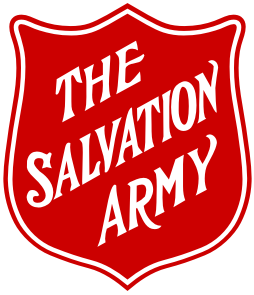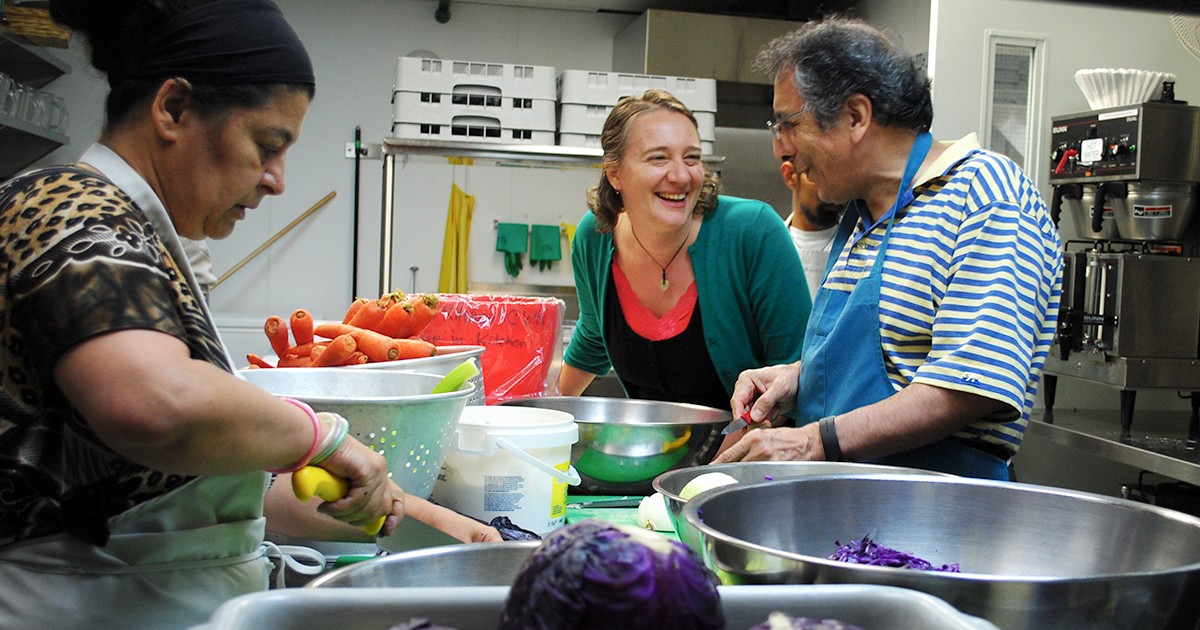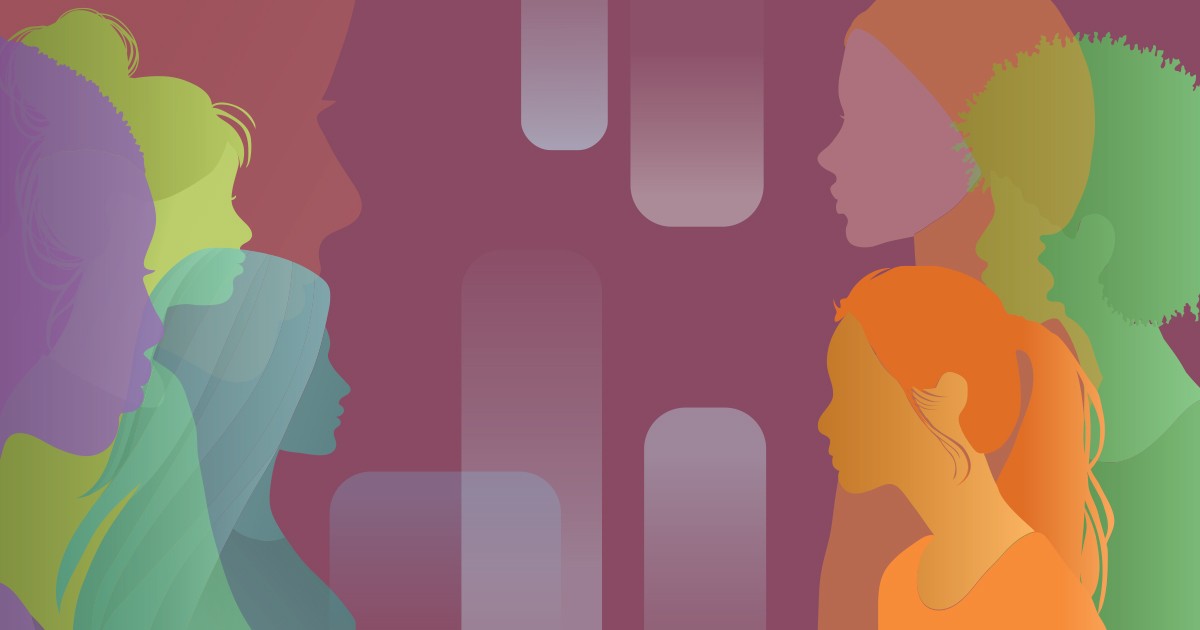“Is there a diet for people like us?” asked a client in a nutrition class at Harbour Light, a Salvation Army addictions treatment program in Vancouver, where I was a dietitian for more than a decade. This facility is in the roughest and least-understood neighbourhood in the city. The session was with clients in the first and hardest weeks of the recovery journey. Fatigue and pain—both physical and emotional—hit hard, and the substances these struggling individuals had been using to provide synthetic energy or to numb their bodies (and hearts) are no longer available. Add to that the loss of community and a body out of its preferred rhythms, undernourished and dehydrated.
From the conversation so far, I knew this client was asking if there was a diet for detoxing and recovery from drug use. Unfortunately, there’s no simple answer to his question.
A BALANCED PLATE
Many who struggle with poverty and addictions also have concurrent health challenges, which may require personalized eating guidance. Common examples include being immunocompromised due to HIV or hepatitis, heart disease, diabetes, dental problems or irritable bowel syndrome (IBS).
Even without additional health challenges, the chaos that led to someone entering a treatment program also likely meant that food was not adequately accessible, and many arrive extremely undernourished. For some, this stress takes away appetite. Others find themselves hungrier than usual, especially craving things that provide quick energy—sweet, caffeinated beverages and simple carbs.
These kinds of cravings are common for any of us when we feel overwhelmed. We have all experienced life slipping out of balance, and then when we get our eating and sleeping in a good rhythm, we function better. We can think more clearly and manage our emotions. Lifewill throw stressful things at us, but we can generally cope with these when we have eaten well.
I explained this to the group in a way I hoped they would understand, knowing their fatigue and limited attention. And then I explained that what we understand now as the healthiest way to eat for all of us—no matter what our lives look like—is if half our plates are vegetables and fruit, about a quarter is protein, and a quarter is carbohydrates (the more unrefined the better, but this was not the setting to go into details like that).
“Half a plate of vegetables!?”
This came from another client, expressing that he had never heard of anything so ridiculous. Or, at least, he had rarely eaten a meal that looked like that. A balance like this is challenging in a residential care program if that is not what the offered meals look like, or if that is not how one grew up eating.
Whole foods like fresh fruit and vegetables, complex carbs and good quality proteins, as well as specialized foods needed for individuals with medical nutrition needs, are more expensive than what is typically available in supportive facilities, especially when the program relies on donations of rescued food. Purchasing decisions and menu planning require expertise and creativity. The food service teams in Salvation Army centres and similar programs across Canada (and beyond) are some of our unsung heroes.
Thought also goes into shaping the environment of treatment programs, which then supports clients to make appropriate choices. For example, we can guide what, when and how meals and snacks are offered to support individuals to make good food choices, especially as clients’ resilience, energy and decision-making ability is limited. Client needs, budget and logistics are often the main things to consider when determining policies, job routines and menus, but the well-being of those who produce our food and climate change concerns are also important.
DIGNIFIED EATING
As a dietitian, I also address misconceptions around nutrition, supplement use and safe food handling practices, which are particularly important for vulnerable individuals. For example, it is common for clients and staff to believe that people coming off the street should consume large amounts of food to catch up on nutrition, but overeating, especially after a season of undernourishment, leads to new health challenges, such as constipation, poor sleep, compromised blood sugar control, lethargy and poor body image.
What an individual has eaten (or not eaten) affects their ability to cope. Better eating habits established during a stay in a treatment program could limit the potential for relapse, or the number of times clients cycle through supportive programs. A key factor in relapse prevention is the ability to make and adhere to good decisions, and not make rash moves in a stressed state. Dignified eating environments also contribute positively, including not having to wait in a lineup for a meal, using non-discriminatory language and offering culturally appropriate foods.
We cannot assume that people know how to eat well, especially those who did not grow up in an environment where regular meals were modelled. Poverty and related stresses change one’s relationship to food. Individuals are more likely to hoard, eat foods that are not safe to consume and overeat when food is available. These tendencies can take a year (or longer) to subside after someone returns to a stable situation. Social capital is often low, and social recovery can be the hardest part of recovery, which further limits access to food and the benefits of sharing meals.
“I have probably spent half a million dollars trying to destroy myself, but I don't spend any money on caring for my body.”
LEARNING TO EAT WELL
Trauma-informed care and harm reduction are also key priorities for programs for vulnerable individuals, and thus we must offer food in ways that emphasize safety, trust and opportunities for choice. Difficult emotions and mental-health challenges, including depression and anxiety, can be soothed (to an extent) or exacerbated by how one eats. During acute stress or a mental-health breakdown, one often eats erratically—the opposite of how one should eat to minimize difficult emotions.
Individuals are often unable to listen to what their bodies are saying they need, and thus require an environment that helps them make appropriate food choices. Food literacy skills, including what to eat in the morning, cooking basics, stocking a kitchen and packing a lunch for work, are an asset and should be covered alongside other relapse prevention skills as individuals prepare to live independently again.
“I have probably spent half a million dollars trying to destroy myself, but I don’t spend any money on caring for my body,” someone told me recently, reflecting on several decades of substance abuse. He seemed to be doing well with his recovery, and certainly looked brighter than he did when I met him five months ago, now that he had been eating regularly, gained a few pounds, neatly trimmed his beard, and had new well-fitting dentures. We were talking about good snacks to keep on hand, as he finds it hard to eat in the mornings, and thus his energy flags by the afternoon.
Changing how we eat is hard, especially for those residing in a facility where one has limited control over food options, or who live without adequate income, but nutrition knowledge and cooking skills are not usually the main barriers to change. Ultimately, before we can explore the question of diet for someone who is struggling, we must consider where the individual lives and if they can purchase enough food.
FOOD SECURITY
The term food security refers to one’s right to (and the measure of) food that is affordable and nutritious. To be food secure, one also must be able to access sustainably grown food that meets one’s cultural preferences and is obtained in dignified ways. Food lines and food banks rarely meet all these criteria, although there are many people doing good work to make free and low-cost food as honouring as possible.
We need economic policies that ensure adequate income for everyone. Living wages and increasing the amount of money provided by social assistance programs, such as child benefits, employment insurance, pensions and rental assistance programs, reduce the risk of food insecurity (and many other challenges).
We also need to learn about and create appropriate supports for those who experience disproportionately higher rates of poverty. Canada’s Indigenous community, those who receive social assistance, lone parent households, renters, individuals living with a disability and vulnerable older adults are more likely to have an inadequate income and struggle with factors affecting the availability and accessibility of food.
These are serious issues, but we must believe they are avoidable, and we can be a transforming influence in our communities. The diet for people like us is a world where everyone has an income, a home, a well-stocked kitchen and a community to share meals with.
KAREN GIESBRECHT is a member of The Salvation Army’s Boundless Vancouver community council. She is a registered dietitian with a particular interest in mental health, strong communities, good stories and real food. She wove all these together in Happy Colon, Happy Soul: An Exploration of Why and How We Share Food. Giesbrecht takes great delight in sharing good meals with her family, friends and those in her community who know hunger. Learn more at karengiesbrecht.com.

This story is from:










Leave a Comment